Type Comparison: Dry vs. Oil-Filled Transformers?
Are you struggling to choose between dry and oil-filled transformers for your project? This decision can significantly impact your system’s performance, safety, and long-term costs.
Dry and oil-filled transformers differ in their cooling methods, maintenance requirements, and environmental impact. Dry types use air for cooling and are safer, while oil-filled types use insulating oil and are more efficient for higher capacities. The choice depends on factors like location, capacity needs, and budget constraints.
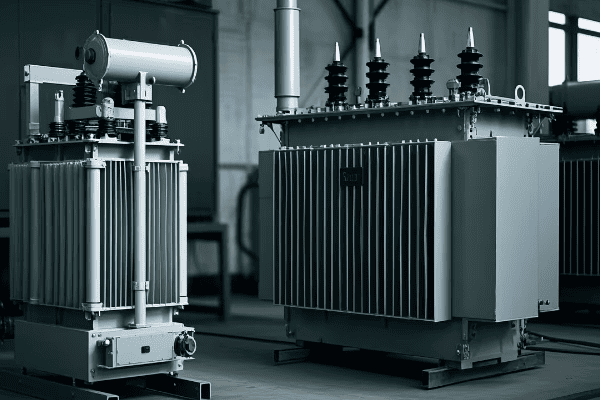
As an experienced electrical engineer, I’ve worked with both types of transformers across various projects. Let’s dive into the key differences and help you make an informed decision for your specific needs.
What Are the Key Differences Between Dry Type and Oil-Filled Transformers?
Are you confused about the fundamental differences between dry type and oil-filled transformers? Understanding these distinctions is crucial for making the right choice for your electrical system.
The main differences between dry type and oil-filled transformers lie in their cooling methods, fire safety, maintenance needs, and environmental impact. Dry types use air for cooling and are safer, while oil-filled types use insulating oil, offering better cooling efficiency but requiring more maintenance.
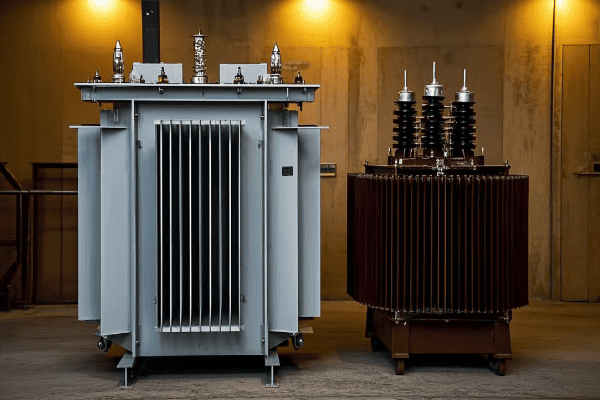
Let’s break down these key differences in detail:
Cooling Method
-
Dry Type Transformers:
- Use air for cooling
- Rely on natural convection or forced air systems
- I’ve installed these in buildings where fire safety is a top priority
-
Oil-Filled Transformers:
- Use insulating oil for cooling and insulation
- More efficient heat dissipation
- In a recent industrial project, we chose oil-filled for its superior cooling in high-load situations
Fire Safety
-
Dry Type Transformers:
- Lower fire risk due to absence of flammable oil
- Ideal for indoor installations
- I once recommended these for a hospital renovation, significantly reducing fire hazard concerns
-
Oil-Filled Transformers:
- Higher fire risk due to presence of oil
- Require additional fire suppression measures
- In outdoor substations, we often use these with proper safety systems in place
Maintenance Requirements
-
Dry Type Transformers:
- Lower maintenance needs
- No oil to monitor or replace
- In a data center project, the reduced maintenance was a key selling point
-
Oil-Filled Transformers:
- Regular oil testing and potential replacement required
- More complex maintenance procedures
- For a large industrial client, we factored in higher maintenance costs over the transformer’s lifespan
Environmental Considerations
-
Dry Type Transformers:
- No risk of oil leaks or spills
- Environmentally friendly option
- Perfect for a recent project near a protected wetland area
-
Oil-Filled Transformers:
- Potential environmental hazard if oil leaks occur
- Require proper oil disposal procedures
- In remote locations, we take extra precautions to prevent environmental contamination
Size and Weight
-
Dry Type Transformers:
- Generally smaller and lighter
- Easier to install in space-constrained areas
- I’ve used these effectively in urban renovation projects with limited space
-
Oil-Filled Transformers:
- Typically larger and heavier
- Require more installation space
- In a recent substation upgrade, we had to factor in the larger footprint of oil-filled units
| Feature | Dry Type | Oil-Filled |
|---|---|---|
| Cooling Method | Air | Insulating Oil |
| Fire Safety | High | Lower |
| Maintenance | Low | Higher |
| Environmental Risk | Minimal | Potential oil leaks |
| Size and Weight | Smaller, Lighter | Larger, Heavier |
In my experience, the choice between dry type and oil-filled transformers often comes down to the specific requirements of the project. For indoor installations or areas with strict fire safety regulations, dry types are usually the go-to choice. However, for high-capacity needs or outdoor installations, oil-filled transformers still have their place.
I remember a project where we initially considered oil-filled transformers for a large office complex due to their higher efficiency. However, after a thorough risk assessment and considering the building’s layout, we opted for multiple dry type transformers instead. This decision not only enhanced safety but also provided more flexibility in power distribution throughout the building.
It’s crucial to consider factors like location, load requirements, environmental conditions, and local regulations when making your choice. Don’t hesitate to consult with experts who can provide insights based on your unique situation.
Dry vs. Wet Transformers: Understanding the Fundamental Distinctions?
Are you puzzled by the terms "dry" and "wet" when it comes to transformers? This confusion is common, but understanding the difference is crucial for choosing the right equipment for your needs.
Dry transformers use solid insulation and air cooling, while wet (oil-filled) transformers use liquid insulation for cooling and insulation. Dry types are safer and require less maintenance, but wet types are more efficient for higher capacities and better at handling overloads.
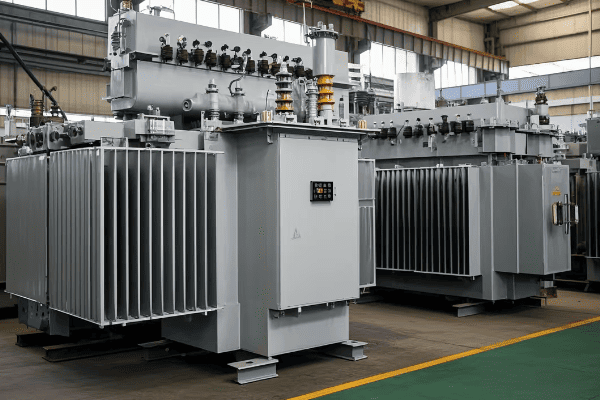
Let’s dive deeper into the fundamental distinctions between dry and wet transformers:
Insulation and Cooling Method
-
Dry Transformers:
- Use solid insulation materials (epoxy resin, silicone, etc.)
- Air-cooled, either naturally or with forced air systems
- I’ve installed these in buildings where minimizing fire risk is crucial
-
Wet (Oil-Filled) Transformers:
- Use liquid insulation (mineral oil, synthetic fluids)
- Oil serves both as coolant and insulator
- In high-capacity industrial settings, I often recommend these for their superior cooling efficiency
Safety Considerations
-
Dry Transformers:
- Lower fire risk due to absence of flammable liquid
- Ideal for indoor installations and populated areas
- I once specified dry transformers for a school renovation project, prioritizing student safety
-
Wet Transformers:
- Higher fire risk due to presence of oil
- Require additional fire suppression measures
- For outdoor substations, we implement rigorous safety protocols to mitigate risks
Maintenance Requirements
-
Dry Transformers:
- Minimal maintenance needed
- No liquid to monitor or replace
- In a recent data center project, the low maintenance aspect was a significant advantage
-
Wet Transformers:
- Regular oil testing and potential replacement required
- More complex maintenance procedures
- For a large utility client, we factor in ongoing oil maintenance costs in our long-term planning
Performance and Efficiency
-
Dry Transformers:
- Generally more efficient at lower capacities
- Limited overload capacity
- I’ve found these ideal for consistent load applications in commercial buildings
-
Wet Transformers:
- More efficient at higher capacities
- Better overload capacity and heat dissipation
- In a recent heavy industrial project, wet transformers were essential for handling variable high loads
Environmental Impact
-
Dry Transformers:
- No risk of oil leaks or spills
- Environmentally friendly option
- Perfect for a project I worked on near a sensitive ecological area
-
Wet Transformers:
- Potential environmental hazard if oil leaks occur
- Require proper oil disposal procedures
- In remote installations, we implement strict containment measures to protect the environment
| Aspect | Dry Transformers | Wet Transformers |
|---|---|---|
| Insulation | Solid (Air/Epoxy) | Liquid (Oil) |
| Fire Risk | Low | Higher |
| Maintenance | Minimal | Regular oil checks |
| Efficiency | Higher at low capacity | Higher at high capacity |
| Environmental Risk | Minimal | Potential oil leaks |
In my years of experience, I’ve found that the choice between dry and wet transformers often depends on the specific application and environment. For instance, in a recent project for a hospital, we chose dry transformers for their safety benefits and lower maintenance requirements. The absence of oil eliminated concerns about potential leaks in a sensitive healthcare environment.
On the other hand, for a large industrial facility with high power demands and outdoor installation, we opted for wet transformers. Their superior cooling efficiency and ability to handle overloads made them the better choice, despite the additional maintenance requirements.
It’s important to note that advancements in technology are continually improving both types of transformers. For example, some modern dry transformers are now capable of handling higher capacities than before, while new types of less flammable oils are making wet transformers safer.
When advising clients, I always emphasize the importance of considering the long-term implications of their choice. Factors like future expansion plans, changes in safety regulations, and evolving environmental standards can all impact the suitability of a transformer type over time.
Remember, while these general distinctions are helpful, each project has its unique requirements. Always consult with a qualified engineer to ensure you’re making the best choice for your specific needs.
How Do Dry Type Transformers Outperform Liquid-Filled Models in Safety and Efficiency?
Are you concerned about the safety and efficiency of your power distribution system? Dry type transformers offer some distinct advantages that might surprise you.
Dry type transformers outperform liquid-filled models in safety by eliminating fire risks associated with oil. They’re more efficient in terms of maintenance, environmental protection, and installation flexibility. However, liquid-filled transformers still have an edge in cooling efficiency and overload capacity for high-power applications.

Let’s explore how dry type transformers stack up against liquid-filled models in safety and efficiency:
Enhanced Fire Safety
-
Dry Type Transformers:
- No flammable liquid, significantly reducing fire risk
- Self-extinguishing materials often used
- I once recommended these for a high-rise office building, drastically improving overall fire safety
-
Liquid-Filled Transformers:
- Contain flammable oil, posing a higher fire risk
- Require additional fire suppression systems
- In outdoor substations, we implement extensive fire safety measures for these
Maintenance Efficiency
-
Dry Type Transformers:
- Minimal maintenance required
- No oil checks or replacements needed
- For a recent data center client, this reduced maintenance downtime significantly
-
Liquid-Filled Transformers:
- Regular oil testing and potential replacement
- More complex maintenance procedures
- In industrial settings, we factor in higher long-term maintenance costs
Environmental Protection
-
Dry Type Transformers:
- No risk of oil leaks or spills
- Environmentally friendly option
- Ideal for a project I worked on near a protected watershed
-
Liquid-Filled Transformers:
- Potential for oil leaks and environmental contamination
- Require proper oil disposal procedures
- In sensitive areas, we implement extensive containment measures
Installation Flexibility
-
Dry Type Transformers:
- Can be installed indoors, close to the load
- Suitable for multi-story buildings
- I’ve placed these on upper floors of buildings, improving power distribution efficiency
-
Liquid-Filled Transformers:
- Often restricted to outdoor or specially designed indoor spaces
- Require oil containment systems
- Typically used in ground-level or basement installations in my projects
Energy Efficiency
-
Dry Type Transformers:
- Generally more efficient at lower capacities
- Consistent performance in varying load conditions
- In commercial buildings, I’ve seen these maintain high efficiency even with fluctuating demands
-
Liquid-Filled Transformers:
- More efficient at higher capacities
- Better performance under sustained heavy loads
- For large industrial clients, these often provide better overall energy efficiency
Overload Capacity
-
Dry Type Transformers:
- Limited overload capacity
- Better suited for stable load profiles
- In IT environments, these handle the consistent loads well
-
Liquid-Filled Transformers:
- Higher overload capacity due to superior cooling
- Can handle temporary load spikes better
- Essential in some industrial applications I’ve worked on with variable high loads
| Aspect | Dry Type | Liquid-Filled |
|---|---|---|
| Fire Safety | Excellent | Good (with precautions) |
| Maintenance | Low | Higher |
| Environmental Risk | Minimal | Present |
| Indoor Installation | Ideal | Limited |
| Energy Efficiency | Better at low capacity | Better at high capacity |
| Overload Capacity | Limited | Higher |
In my experience, the choice between dry type and liquid-filled transformers often comes down to specific application needs and environmental considerations. For instance, in a recent hospital project, we opted for dry type transformers throughout the facility. The enhanced fire safety and reduced maintenance needs were crucial in a healthcare environment where safety and continuous operation are paramount.
However, for a large manufacturing plant I worked on, liquid-filled transformers were the better choice. The high power requirements and need for overload capacity in certain production processes made the cooling efficiency of liquid-filled units more suitable.
It’s important to note that advancements in technology are continuously improving both types of transformers. Some modern dry type designs are pushing the boundaries of what was previously thought possible in terms of capacity and efficiency. Similarly, newer liquid-filled transformers are using less flammable fluids, addressing some of the traditional safety concerns.
When advising clients, I always emphasize the importance of considering the total cost of ownership, not just the initial investment. While dry type transformers might have a higher upfront cost, their lower maintenance requirements and enhanced safety features often result in long-term savings, especially in indoor or sensitive environments.
Remember, there’s no one-size-fits-all solution. The best choice depends on factors like location, load profile, environmental conditions, and local regulations. Always consult with a qualified engineer to ensure you’re making the most appropriate selection for your specific needs.
Exploring Transformer Oil Types: What Sets Type 1 and Type 2 Apart?
Are you puzzled by the different types of transformer oils? Understanding the distinction between Type 1 and Type 2 oils is crucial for maintaining your transformer’s performance and longevity.
Type 1 and Type 2 transformer oils differ in their chemical composition and performance characteristics. Type 1 is a mineral oil with good oxidation stability, while Type 2 is a high-grade oil with superior oxidation resistance. Type 2 offers better performance but at a higher cost, making the choice dependent on specific application needs.
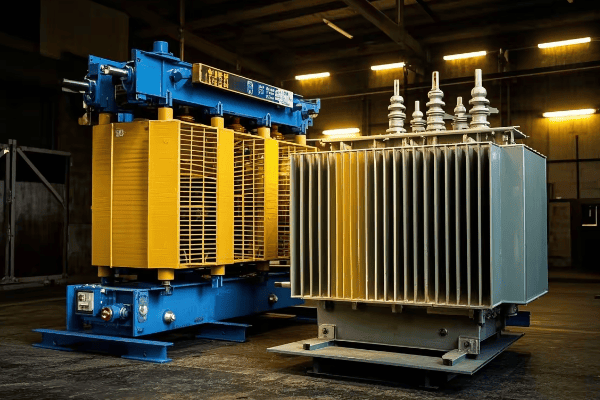
Let’s delve into the key differences between Type 1 and Type 2 transformer oils:
Chemical Composition
-
Type 1 Oil:
- Mineral oil-based
- Contains natural inhibitors
- I’ve used this in many standard transformer applications
-
Type 2 Oil:
- Highly refined mineral oil
- Contains additional synthetic inhibitors
- In critical installations, I often recommend this for its superior properties
Oxidation Stability
-
Type 1 Oil:
- Good oxidation stability
- Suitable for most standard applications
- In a recent project for a small substation, Type 1 oil was sufficient for their needs
-
Type 2 Oil:
- Excellent oxidation stability
- Ideal for high-stress environments
- I specified this for a transformer in a high-temperature industrial setting
Performance Characteristics
-
Type 1 Oil:
- Good electrical properties
- Adequate thermal characteristics
- Works well in transformers with moderate loading
-
Type 2 Oil:
- Superior electrical properties
- Excellent thermal characteristics
- I’ve used this in transformers subject to heavy loading or frequent overloads
Lifespan and Maintenance
-
Type 1 Oil:
- Decent lifespan under normal conditions
- Requires regular maintenance
- For a municipal power project, we used Type 1 oil with a standard maintenance schedule
-
Type 2 Oil:
- Extended lifespan, especially in challenging conditions
- Requires less frequent maintenance
- In a remote installation, Type 2 oil’s longer service intervals were a significant advantage
Cost Considerations
-
Type 1 Oil:
- More economical option
- Cost-effective for standard applications
- I often recommend this for budget-conscious clients with typical transformer needs
-
Type 2 Oil:
- Higher initial cost
- More cost-effective in the long run for high-stress applications
- For a critical power supply project, the client saw the value in investing in Type 2 oil
Environmental Impact
-
Type 1 Oil:
- Standard environmental considerations apply
- Widely used an1. Type 1 Oil:
- Standard environmental considerations apply
- Widely used and familiar to most disposal services
- In a recent urban project, we used Type 1 oil due to readily available disposal options
-
Type 2 Oil:
- Often has better biodegradability
- May have reduced environmental impact
- For a project near a nature reserve, we chose Type 2 oil for its improved environmental profile
| Characteristic | Type 1 Oil | Type 2 Oil |
|---|---|---|
| Composition | Mineral oil | Highly refined mineral oil |
| Oxidation Stability | Good | Excellent |
| Performance | Standard | Superior |
| Lifespan | Normal | Extended |
| Cost | Lower | Higher |
| Environmental Impact | Standard | Potentially lower |
In my years of experience working with transformers, I’ve found that the choice between Type 1 and Type 2 oils often depends on the specific requirements of the installation. For instance, in a project I managed for a standard distribution transformer in a temperate climate, Type 1 oil was perfectly adequate. It provided good performance at a reasonable cost, and the maintenance requirements aligned well with the client’s capabilities.
However, in another project involving a high-capacity transformer in a hot, humid environment, I strongly recommended Type 2 oil. The superior oxidation stability and thermal characteristics of Type 2 oil were crucial in ensuring the longevity and reliability of the transformer under these challenging conditions. Although the initial cost was higher, the client understood that the reduced maintenance needs and extended lifespan would provide better value over time.
It’s important to note that the performance gap between Type 1 and Type 2 oils can vary depending on the specific formulations and brands. In recent years, I’ve noticed that some advanced Type 1 oils are approaching the performance of traditional Type 2 oils, while new Type 2 formulations are pushing the boundaries even further.
When advising clients, I always emphasize the importance of considering the total cost of ownership, not just the initial oil purchase price. Factors like expected load profiles, ambient temperatures, maintenance schedules, and the criticality of the transformer in the power system all play a role in determining whether the premium price of Type 2 oil is justified.
Additionally, environmental regulations are becoming increasingly stringent in many regions. In some recent projects, particularly in environmentally sensitive areas, the improved biodegradability of certain Type 2 oils has been a deciding factor, even for applications where Type 1 oil would have been technically sufficient.
Remember, while these general distinctions are helpful, the specific characteristics can vary between manufacturers and formulations. Always consult the oil specifications and, if possible, seek advice from both the oil and transformer manufacturers to ensure compatibility and optimal performance for your specific application.
Which Transformer Type Is Best for Your Application: Dry or Oil-Filled?
Are you struggling to decide between dry and oil-filled transformers for your project? This choice can significantly impact your system’s performance, safety, and long-term costs.
The best transformer type depends on your specific application. Dry transformers excel in safety-critical, indoor, or environmentally sensitive areas. Oil-filled transformers are ideal for high-capacity outdoor installations or where overload capacity is crucial. Consider factors like location, capacity needs, maintenance capabilities, and environmental conditions.
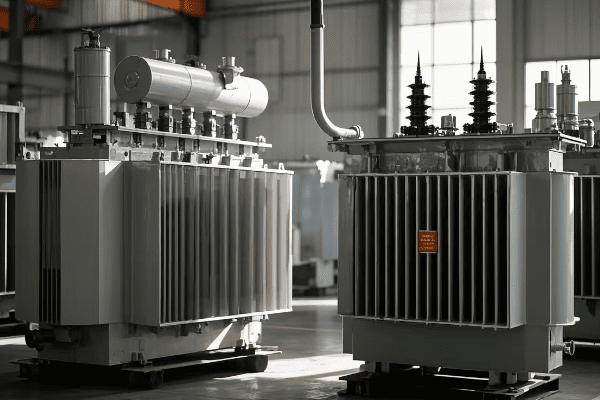
Let’s explore the factors that should guide your decision:
Installation Environment
-
Indoor Applications:
- Dry transformers are often the better choice
- Reduced fire risk and no oil leaks
- I recently installed dry transformers in a multi-story office building, maximizing safety and space efficiency
-
Outdoor Installations:
- Oil-filled transformers can be more suitable
- Better weather resistance and cooling efficiency
- For a substation project, we used oil-filled units due to their superior outdoor performance
Capacity Requirements
-
Low to Medium Capacity:
- Dry transformers are often more efficient
- Suitable for most commercial and light industrial applications
- In a recent school renovation, dry transformers met all power needs efficiently
-
High Capacity:
- Oil-filled transformers typically perform better
- Necessary for heavy industrial or utility-scale applications
- For a large manufacturing plant, oil-filled transformers handled high power demands effectively
Safety Considerations
-
Fire-Sensitive Areas:
- Dry transformers are the safer option
- No flammable oil, reducing fire risk
- I always recommend dry types for hospitals and data centers
-
Areas with Lower Fire Risk:
- Oil-filled transformers can be used with proper safety measures
- More suitable for isolated or outdoor locations
- In a remote solar farm project, we used oil-filled transformers with comprehensive fire suppression systems
Maintenance Capabilities
-
Limited Maintenance Resources:
- Dry transformers require less maintenance
- No oil checks or replacements needed
- For a small business client with no dedicated maintenance staff, dry transformers were ideal
-
Robust Maintenance Program:
- Oil-filled transformers can be managed with regular maintenance
- Require periodic oil testing and potential replacement
- In large industrial settings with on-site technicians, oil-filled transformers are often preferred for their performance benefits
Environmental Factors
-
Environmentally Sensitive Areas:
- Dry transformers pose no risk of oil leaks
- Ideal near water sources or protected areas
- For a project near a national park, dry transformers were the only acceptable option
-
Standard Environmental Conditions:
- Oil-filled transformers can be used with proper containment
- More flexible in typical industrial or urban settings
- In a standard urban substation upgrade, oil-filled transformers were used with appropriate safeguards
Load Profile
-
Steady Loads:
- Dry transformers perform well under consistent conditions
- Suitable for many commercial and residential applications
- In an apartment complex project, dry transformers handled the predictable load patterns efficiently
-
Variable or High Peak Loads:
- Oil-filled transformers offer better overload capacity
- Ideal for industrial applications with fluctuating demands
- For a steel mill with high, variable power needs, oil-filled transformers were essential
| Factor | Favors Dry Type | Favors Oil-Filled |
|---|---|---|
| Location | Indoor, populated areas | Outdoor, isolated areas |
| Capacity | Low to medium | High |
| Safety Priority | High fire safety needs | Standard safety needs |
| Maintenance | Limited resources | Robust maintenance program |
| Environment | Sensitive areas | Standard conditions |
| Load Profile | Steady loads | Variable, high peak loads |
In my experience, the decision between dry and oil-filled transformers is rarely straightforward. It often requires balancing multiple factors. For instance, in a recent project for a new urban development, we initially considered oil-filled transformers for their higher capacity. However, after analyzing the location (densely populated area), safety requirements (strict fire codes), and the client’s maintenance capabilities, we opted for multiple dry transformers instead.
This decision not only met the power requirements but also simplified compliance with local regulations and reduced long-term maintenance costs. The distributed nature of multiple smaller dry transformers also improved the overall reliability of the power distribution system.
On the other hand, for a large industrial client with high power demands and 24/7 operations, we chose oil-filled transformers. The need for high capacity and excellent overload handling capability outweighed the additional maintenance requirements. In this case, the client had a well-established maintenance team and the space for proper oil containment systems.
It’s important to note that advancements in technology are continually blurring the lines between these two types. Some modern dry transformers are now capable of handling higher capacities, while new types of less flammable oils are making oil-filled transformers safer for more applications.
When advising clients, I always emphasize the importance of looking beyond the initial purchase price. The total cost of ownership, including installation, maintenance, potential downtime, and replacement costs, should be considered. In some cases, the higher initial cost of dry transformers is offset by lower maintenance and enhanced safety over the life of the equipment.
Remember, there’s no one-size-fits-all solution. Each project has its unique set of requirements and constraints. Always consult with a qualified engineer who can analyze your specific needs and help you make the best choice for your application.
Environmental Impact: Comparing Dry and Oil-Filled Transformer Technologies?
Are you concerned about the environmental footprint of your power distribution system? The choice between dry and oil-filled transformers can significantly impact your project’s environmental sustainability.
Dry transformers generally have a lower environmental impact due to the absence of oil, eliminating risks of soil and water contamination. Oil-filled transformers, while efficient, pose potential environmental hazards from oil leaks. However, modern oil-filled units use more eco-friendly oils and have improved containment systems.
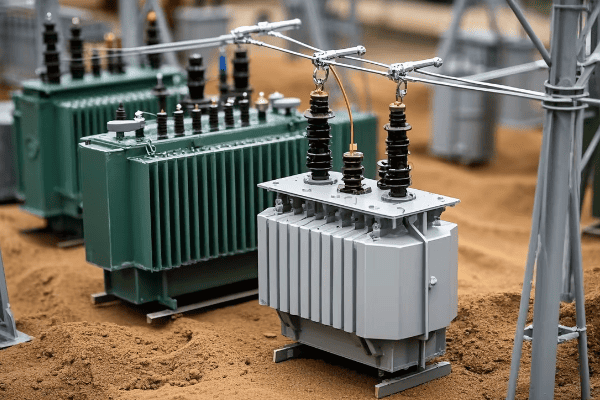
Let’s delve into the environmental considerations of both transformer types:
Risk of Contamination
-
Dry Transformers:
- No risk of oil leaks or spills
- Ideal for environmentally sensitive areas
- I recently used these near a protected wetland, ensuring zero risk of water contamination
-
Oil-Filled Transformers:
- Potential risk of oil leaks
- Require robust containment systems
- In a project near a river, we implemented extensive safeguards to prevent any oil from reaching the water
Waste Management
-
Dry Transformers:
- Simpler end-of-life disposal
- No hazardous oil waste to manage
- For a recent urban renewal project, the simplified waste management was a key advantage
-
Oil-Filled Transformers:
- Require proper oil disposal at end-of-life
- Periodic oil changes generate waste
- In an industrial setting, we had to establish a comprehensive oil management program
Energy Efficiency
-
Dry Transformers:
- Generally more efficient at lower capacities
- Lower no-load losses in many cases
- In a commercial building project, dry transformers provided excellent efficiency for the required capacity
-
Oil-Filled Transformers:
- More efficient at higher capacities
- Better cooling can lead to improved efficiency under heavy loads
- For a large data center, oil-filled transformers offered superior efficiency at the required high capacity
Material Usage
-
Dry Transformers:
- Use less raw materials overall
- No need for oil production or replacement
- In a sustainability-focused project, the reduced material usage of dry transformers was a significant factor
-
Oil-Filled Transformers:
- Require ongoing oil production and replacement
- More complex construction may use more materials
- For a long-term industrial installation, we had to consider the environmental impact of ongoing oil usage
Noise Pollution
-
Dry Transformers:
- Generally quieter operation
- Reduced noise pollution in urban environments
- I’ve used these in residential areas where noise regulations are strict
-
Oil-Filled Transformers:
- Can be noisier, especially with cooling fans
- May require additional noise mitigation measures
- In an industrial park project, we had to implement sound barriers for oil-filled units
Biodiversity Impact
-
Dry Transformers:
- Minimal impact on surrounding ecosystems
- Safe for use in wildlife-sensitive areas
- For a project near a national park, dry transformers were the clear choice to protect local biodiversity
-
Oil-Filled Transformers:
- Potential impact on local flora and fauna if leaks occur
- Require more extensive environmental impact assessments
- In a reforestation area, we chose dry transformers to minimize any potential harm to the recovering ecosystem
| Environmental Aspect | Dry Transformers | Oil-Filled Transformers |
|---|---|---|
| Contamination Risk | None | Present |
| Waste Management | Simple | Complex |
| Energy Efficiency | Better at low capacity | Better at high capacity |
| Material Usage | Lower | Higher |
| Noise Pollution | Lower | Higher |
| Biodiversity Impact | Minimal | Potential risk |
In my experience, the environmental impact of transformer choice extends beyond just the risk of oil spills. For instance, in a recent green building project aiming for LEED certification, we opted for dry transformers. Not only did this eliminate the risk of oil contamination, but the reduced maintenance needs and lower material usage over the transformer’s lifetime contributed significantly to the building’s overall sustainability score.
However, it’s important to note that modern oil-filled transformers have made significant strides in environmental safety. In a large-scale utility project I worked on, we used state-of-the-art oil-filled transformers with biodegradable oils and advanced leak detection systems. While the potential for environmental impact was still present, the risk was substantially mitigated compared to older models.
The choice often comes down to balancing environmental concerns with performance needs. In some high-capacity applications, the superior efficiency of oil-filled transformers at heavy loads can actually lead to lower overall energy consumption and, consequently, a reduced carbon footprint. This was the case in a recent heavy industrial project where the energy savings from using high-efficiency oil-filled transformers outweighed the potential environmental risks, which were carefully managed through comprehensive containment and monitoring systems.
It’s also worth considering the full lifecycle environmental impact. Dry transformers often have a longer lifespan and require fewer replacements, which can mean less manufacturing and transportation-related emissions over time. However, the recyclability of materials at end-of-life can vary between types and should be factored into long-term environmental assessments.
When advising clients on environmental aspects, I always emphasize the importance of considering local ecosystems and regulations. What might be an acceptable risk in one area could be completely unacceptable in another. It’s crucial to work closely with environmental experts and local authorities to ensure that your transformer choice aligns with both your operational needs and environmental responsibilities.
Remember, environmental stewardship in power distribution isn’t just about choosing between dry and oil-filled transformers. It’s about implementing a holistic approach that considers efficiency, maintenance practices, emergency preparedness, and end-of-life planning. By carefully weighing all these factors, you can make a choice that not only meets your power needs but also aligns with your environmental values and responsibilities.
Maintenance and Lifespan: Dry vs. Oil-Filled Transformer Considerations?
Are you wondering about the long-term care and durability of different transformer types? Understanding the maintenance requirements and lifespan of dry and oil-filled transformers is crucial for making an informed decision.
Dry transformers generally require less maintenance and have a lifespan of 20-30 years. Oil-filled transformers need more regular maintenance, including oil testing and replacement, but can last 30-40 years with proper care. The choice impacts long-term operational costs and reliability.
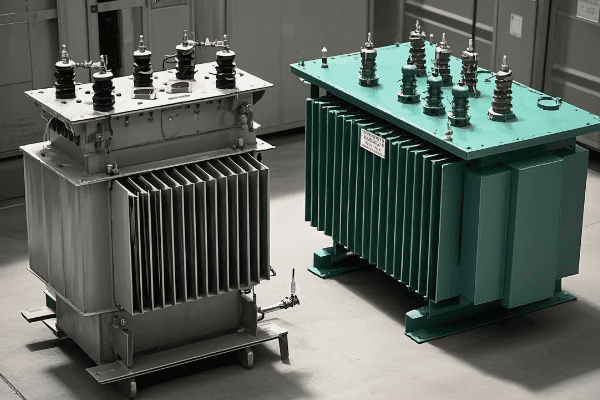
Let’s explore the maintenance needs and lifespan considerations for both types:
Routine Maintenance Requirements
-
Dry Transformers:
- Minimal routine maintenance
- Periodic visual inspections and cleaning
- In a recent data center project, the low maintenance needs of dry transformers were a key selling point
-
Oil-Filled Transformers:
- Regular oil testing and analysis
- Potential oil filtering or replacement
- For an industrial client, we established a comprehensive oil maintenance schedule
Frequency of Inspections
-
Dry Transformers:
- Less frequent inspections required
- Typically annual or semi-annual checks
- In a commercial building I managed, we scheduled inspections just twice a year
-
Oil-Filled Transformers:
- More frequent inspections needed
- Often quarterly or even monthly checks
- For a utility substation, we implemented monthly inspection routines
Lifespan Expectations
-
Dry Transformers:
- Average lifespan of 20-30 years
- Consistent performance over time
- I’ve seen dry transformers in office buildings reliably operate for over 25 years
-
Oil-Filled Transformers:
- Can last 30-40 years with proper maintenance
- Performance may degrade over time if not well-maintained
- In a well-managed industrial setting, I’ve observed oil-filled units functioning efficiently for 35+ years
Repair and Part Replacement
-
Dry Transformers:
- Fewer components to replace
- Repairs often simpler and quicker
- During a recent upgrade project, we found dry transformers easier to service on-site
-
Oil-Filled Transformers:
- More complex repair procedures
- May require oil drainage for internal access
- In a factory setting, repairs to oil-filled units often required specialized technicians
Environmental Factors Affecting Lifespan
-
Dry Transformers:
- Less affected by environmental conditions
- Perform well in various climates
- I’ve installed these in both arid and humid environments with consistent performance
-
Oil-Filled Transformers:
- More sensitive to extreme temperatures
- May require additional cooling in hot climates
- For a project in a tropical location, we had to implement enhanced cooling systems for oil-filled units
Cost of Maintenance Over Time
-
Dry1. Dry Transformers:
- Lower long-term maintenance costs
- Fewer consumables and replacement parts needed
- In a 10-year cost analysis for a commercial client, dry transformers showed significant savings in maintenance expenses
-
Oil-Filled Transformers:
- Higher ongoing maintenance costs
- Expenses for oil testing, filtering, and replacement
- For an industrial plant, we factored in substantial annual budgets for oil maintenance
Skill Level Required for Maintenance
-
Dry Transformers:
- Lower skill level required for routine maintenance
- Often manageable by general maintenance staff
- In a small business setting, I trained the facility manager to perform basic checks on dry transformers
-
Oil-Filled Transformers:
- Higher skill level needed, especially for oil handling
- Often require specialized technicians
- For a utility company, we established a dedicated team trained in oil transformer maintenance
Impact on Operational Continuity
-
Dry Transformers:
- Less downtime for maintenance
- Quicker to bring back online after inspections
- In a hospital project, the minimal disruption for maintenance was a crucial factor in choosing dry transformers
-
Oil-Filled Transformers:
- More potential for extended downtime during maintenance
- Oil handling procedures can be time-consuming
- For a 24/7 manufacturing facility, we had to carefully schedule maintenance to minimize production impacts
| Aspect | Dry Transformers | Oil-Filled Transformers |
|---|---|---|
| Routine Maintenance | Minimal | Regular and extensive |
| Inspection Frequency | Annual/Semi-annual | Quarterly/Monthly |
| Average Lifespan | 20-30 years | 30-40 years with proper care |
| Repair Complexity | Lower | Higher |
| Environmental Sensitivity | Lower | Higher |
| Long-term Maintenance Costs | Lower | Higher |
| Required Skill Level | Lower | Higher |
| Operational Downtime | Less | More |
In my years of experience managing various transformer installations, I’ve observed that the maintenance and lifespan considerations often play a crucial role in the total cost of ownership. For instance, in a recent project for a mid-sized office complex, we opted for dry transformers despite their higher initial cost. Over a projected 25-year lifespan, the reduced maintenance needs and lower operational costs resulted in significant savings compared to oil-filled alternatives.
However, it’s important to note that the longevity and performance of both types heavily depend on the quality of maintenance they receive. I recall a manufacturing plant where well-maintained oil-filled transformers were still operating efficiently after 35 years, while in another facility, poorly maintained dry transformers needed replacement after just 15 years.
The choice between dry and oil-filled transformers often comes down to balancing initial costs, maintenance capabilities, and long-term operational needs. For clients with limited maintenance resources or those prioritizing minimal downtime, I typically recommend dry transformers. Their simplicity and lower maintenance requirements often outweigh the potentially shorter lifespan.
On the other hand, for industrial clients with robust maintenance programs and the need for high-capacity, long-lasting units, oil-filled transformers can be an excellent choice. In a recent project for a large chemical plant, we chose oil-filled transformers because the client had a skilled maintenance team and the capacity to handle regular oil maintenance, allowing them to maximize the transformers’ lifespan and performance.
It’s also worth considering the evolving technology in both types of transformers. Modern dry transformers are becoming more durable and efficient, narrowing the lifespan gap with oil-filled units. Similarly, advancements in oil formulations and monitoring technologies are making oil-filled transformers easier to maintain and more reliable.
When advising clients on maintenance and lifespan considerations, I always emphasize the importance of a comprehensive, long-term view. This includes not just the direct maintenance costs, but also factors like the availability of skilled technicians, the impact of potential downtime on operations, and even future regulatory changes that might affect transformer maintenance practices.
Remember, the best choice isn’t always the one with the longest potential lifespan or the lowest maintenance needs. It’s the one that best fits your operational capabilities, budget constraints, and long-term strategic goals. Always consider your specific context and consult with experts to make an informed decision that will serve you well for decades to come.
Cost Analysis: Is a Dry Type Transformer More Economical in the Long Run?
Are you wondering whether the higher upfront cost of dry type transformers is justified by long-term savings? This question is crucial for making a sound financial decision for your power distribution needs.
While dry type transformers often have a higher initial cost, they can be more economical in the long run due to lower maintenance expenses, reduced fire risk, and longer operational life in certain environments. However, the cost-effectiveness depends on factors like capacity, location, and operational requirements.
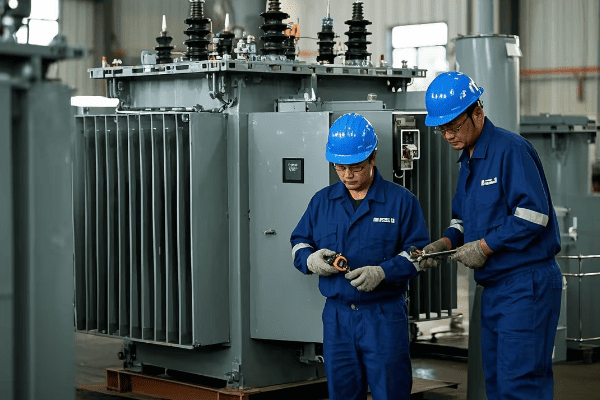
Let’s break down the cost considerations for both dry and oil-filled transformers:
Initial Investment
-
Dry Type Transformers:
- Generally higher upfront cost
- More expensive for higher capacities
- In a recent commercial project, dry transformers were 20% more expensive initially
-
Oil-Filled Transformers:
- Lower initial purchase price
- More cost-effective for high-capacity needs
- For a large industrial installation, oil-filled units offered significant upfront savings
Installation Costs
-
Dry Type Transformers:
- Lower installation costs, especially indoors
- No need for oil containment systems
- In a multi-story office building, installation of dry transformers was straightforward and cost-effective
-
Oil-Filled Transformers:
- Higher installation costs due to oil handling and containment needs
- May require special foundations or structures
- For an outdoor substation, additional costs for oil containment significantly increased the installation budget
Maintenance Expenses
-
Dry Type Transformers:
- Lower ongoing maintenance costs
- No oil testing or replacement needed
- A data center client saw a 40% reduction in annual maintenance costs with dry transformers
-
Oil-Filled Transformers:
- Higher maintenance expenses over time
- Regular oil testing and potential replacement
- An industrial client budgets substantial annual costs for oil maintenance and testing
Operational Efficiency
-
Dry Type Transformers:
- Generally more efficient at lower capacities
- Lower losses in partial load conditions
- In a variable load commercial environment, dry transformers showed better overall efficiency
-
Oil-Filled Transformers:
- More efficient at higher capacities
- Better performance under full load
- For a consistently high-load industrial application, oil-filled units provided superior efficiency
Lifespan and Replacement Costs
-
Dry Type Transformers:
- Typical lifespan of 20-30 years
- May require earlier replacement in harsh environments
- In a clean, controlled environment, I’ve seen dry transformers last over 25 years without issues
-
Oil-Filled Transformers:
- Can last 30-40 years with proper maintenance
- Longer lifespan can offset higher maintenance costs
- A well-maintained oil-filled transformer in an industrial setting has been operating efficiently for 35 years
Insurance and Risk Mitigation
-
Dry Type Transformers:
- Lower insurance premiums due to reduced fire risk
- Fewer safety measures required
- A hospital client saw a 15% reduction in insurance costs after switching to dry transformers
-
Oil-Filled Transformers:
- Higher insurance costs due to fire and environmental risks
- May require additional fire suppression systems
- For an oil-filled installation near a sensitive area, insurance and risk mitigation costs were substantial
Environmental Compliance Costs
-
Dry Type Transformers:
- Minimal environmental compliance costs
- No oil disposal or containment regulations to meet
- In an environmentally sensitive project, dry transformers eliminated the need for costly containment systems
-
Oil-Filled Transformers:
- Ongoing costs for environmental compliance
- Expenses for oil disposal and potential cleanup
- A client near a water source incurred significant costs for environmental safeguards with oil-filled units
| Cost Factor | Dry Type Transformers | Oil-Filled Transformers |
|---|---|---|
| Initial Cost | Higher | Lower |
| Installation | Lower | Higher |
| Maintenance | Lower | Higher |
| Efficiency | Better at low capacity | Better at high capacity |
| Lifespan | 20-30 years | 30-40 years with care |
| Insurance | Lower premiums | Higher premiums |
| Environmental Compliance | Minimal costs | Ongoing expenses |
In my experience, the long-term cost-effectiveness of dry type transformers often becomes apparent in specific scenarios. For instance, in a recent project for a mid-sized office complex, we conducted a 20-year total cost of ownership (TCO) analysis. Despite the higher initial cost, the dry transformers proved more economical due to lower maintenance needs, reduced insurance premiums, and energy savings in the variable load environment.
However, it’s crucial to note that the cost-effectiveness can vary significantly based on the application. In a large industrial project I worked on, with consistently high loads and a skilled maintenance team, oil-filled transformers were more economical over a 30-year period. The higher efficiency at full load and longer lifespan offset the increased maintenance costs.
One often overlooked factor is the cost of potential failures. While less common, when failures do occur, dry transformers typically have lower repair costs and shorter downtime. In a critical application like a data center, this reduced risk of extended outages can translate to significant savings in potential lost revenue.
The regulatory environment can also impact long-term costs. In regions with stringent environmental regulations, the compliance costs for oil-filled transformers can escalate over time. I’ve seen cases where changing regulations forced costly retrofits or early replacements of oil-filled units, a risk that’s much lower with dry transformers.
When advising clients on the economic aspects of transformer choice, I always emphasize the importance of a comprehensive TCO analysis. This should include not just the obvious costs like purchase and maintenance, but also factors like energy efficiency, insurance premiums, compliance costs, and even the potential impact on property values or rental income in commercial real estate projects.
It’s also worth considering future-proofing your investment. With the increasing focus on environmental sustainability and energy efficiency, dry transformers often align better with long-term corporate sustainability goals. This can have indirect economic benefits in terms of corporate image and compliance with future regulations.
Remember, while cost is a crucial factor, it shouldn’t be the only consideration. Factors like safety, reliability, and environmental impact are equally important in many applications. The most economical choice is often the one that best balances all these factors within the specific context of your project and long-term operational goals.
Conclusion
Choosing between dry and oil-filled transformers involves balancing various factors including safety, efficiency, maintenance, environmental impact, and cost. While dry transformers often excel in safety and environmental aspects, oil-filled units can be more suitable for high-capacity needs. The best choice depends on your specific application, environment, and long-term operational requirements.
Free CHBEB Transformer Catalog Download
Get the full range of CHBEB transformers in one catalog.
Includes oil-immersed, dry-type, pad-mounted, and custom solutions.
Quick Message
Request A free quote
We'd like to work with you
- +86 15558785111
- [email protected]
- +86 15558785111
What We Do
CHINA BEI ER BIAN (CHBEB) GROUP, with 218 million in registered capital, originated from Beijing Beierbian Transformer Group. Headquartered in Beijing for R&D, it operates major production bases in Nanjing and Yueqing, producing high-quality products.
Latest Product
address
BeiJing
No 3,RongJing East Road,BeiJing Economic Technological Development Area,BeiJing,China
JiangSu
No 7️Xiangfeng Road,Jiangning,NanJing,JiangSu,China
WenZhou
No.211, Wei 16 Road, Industrial Zone, Yueqing, Wenzhou, Zhejiang, China.
XiangYang Industrial Zone ,YueQing,WenZhou,ZheJiang,China
contact us
- [email protected]
- +86 13057780111
- +86 13057780111
- +86 15558785111
Copyright © Bei Er Bian Group


